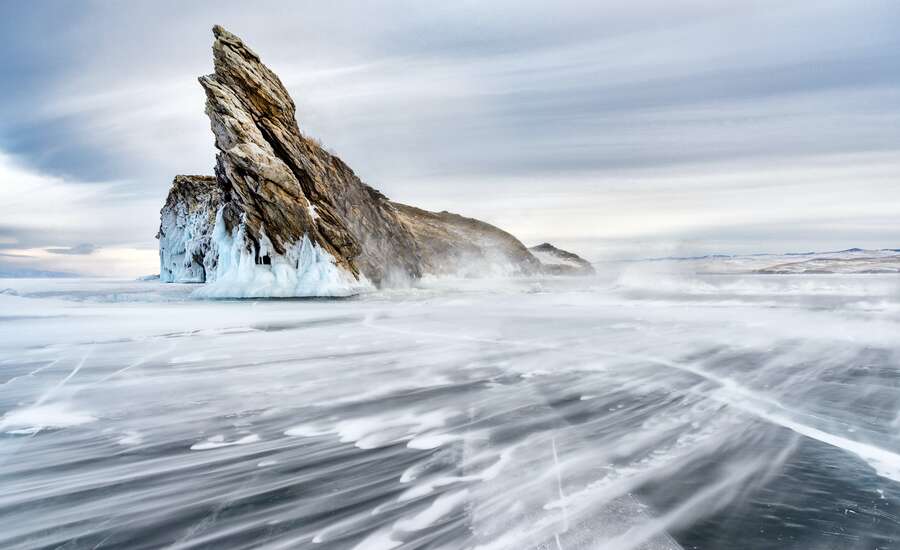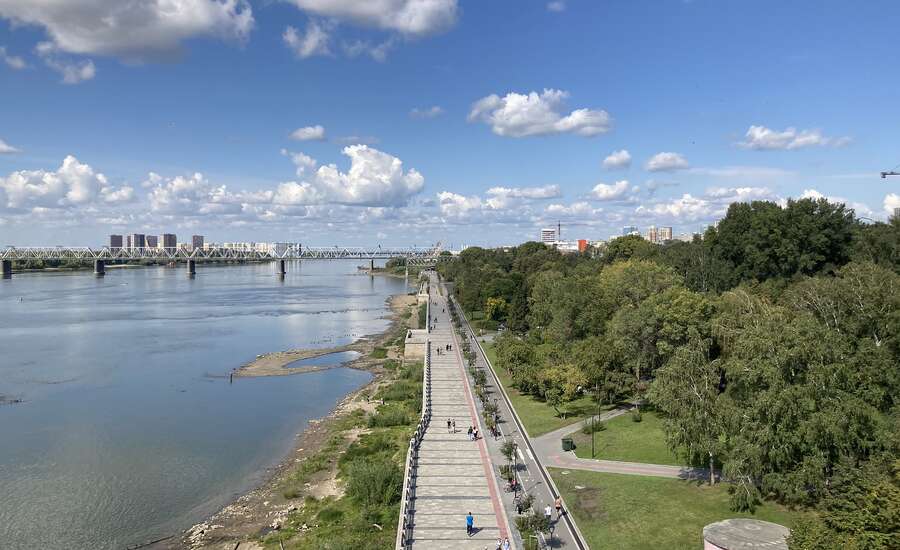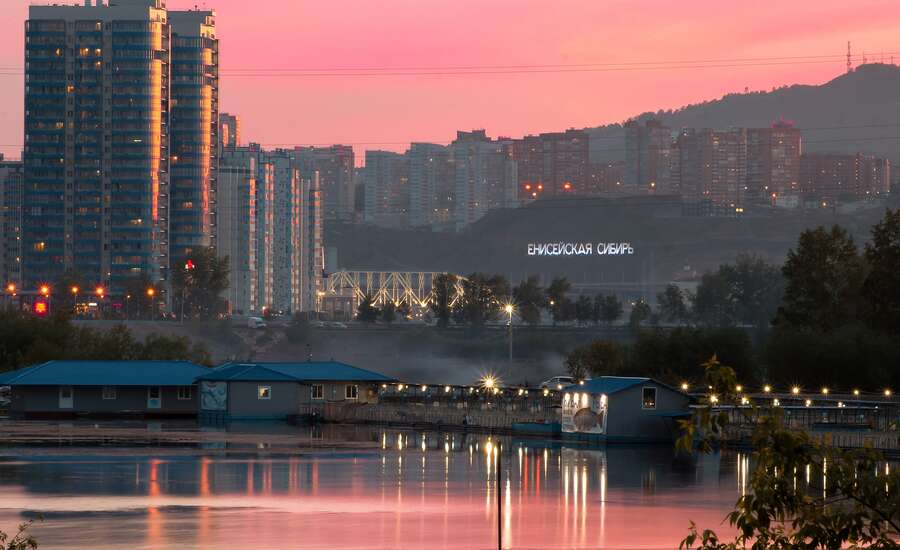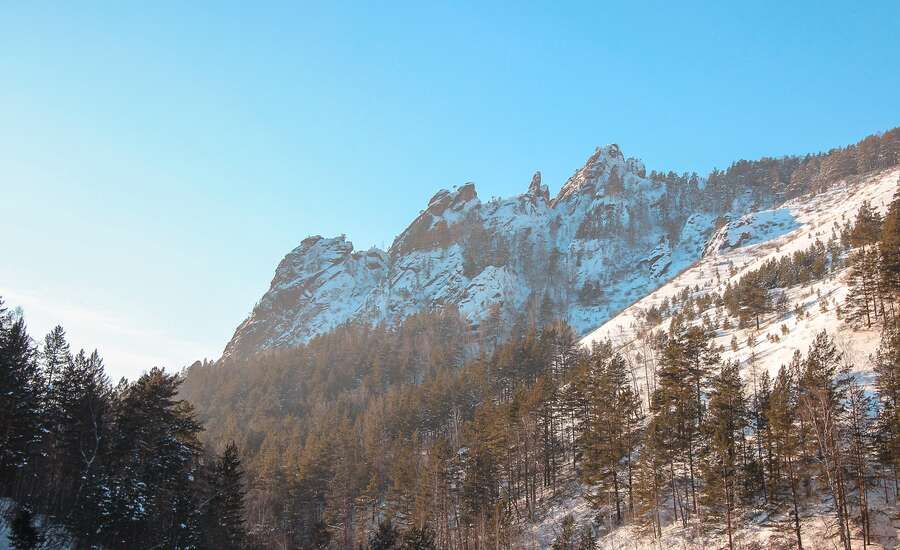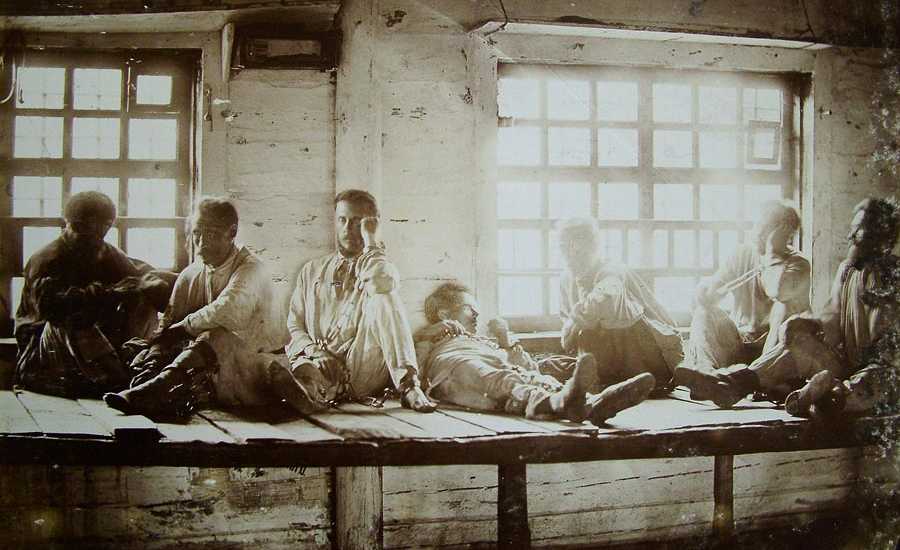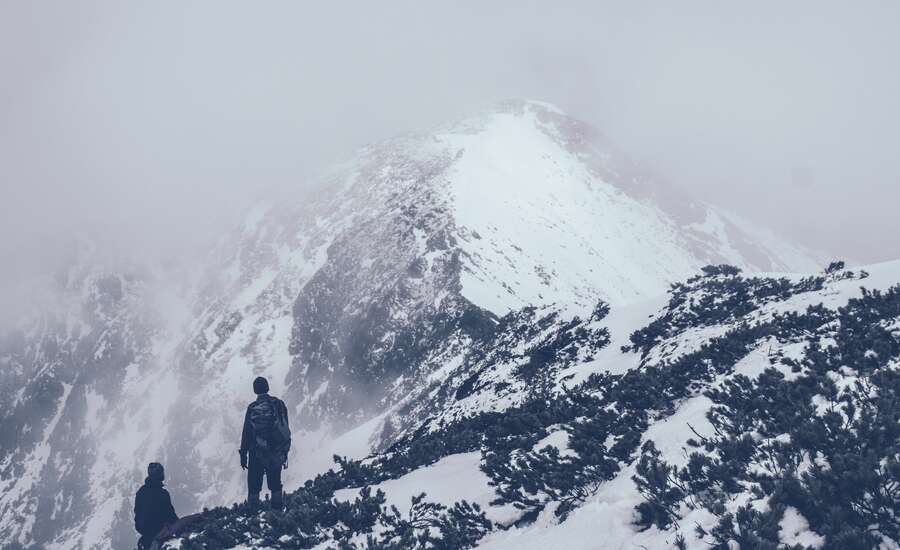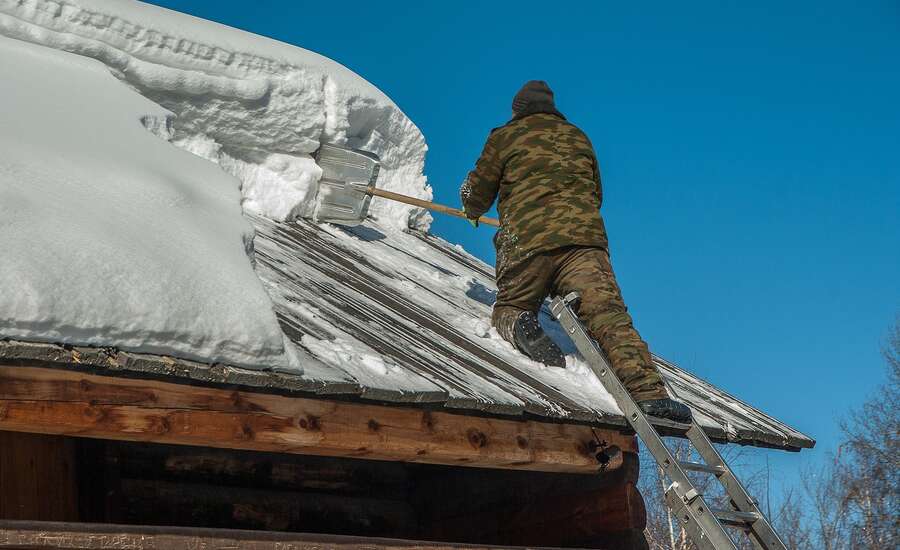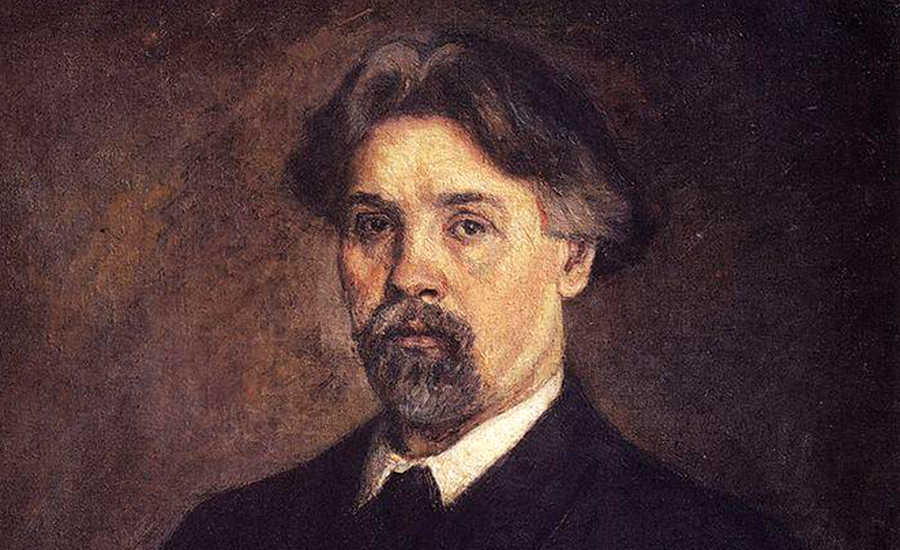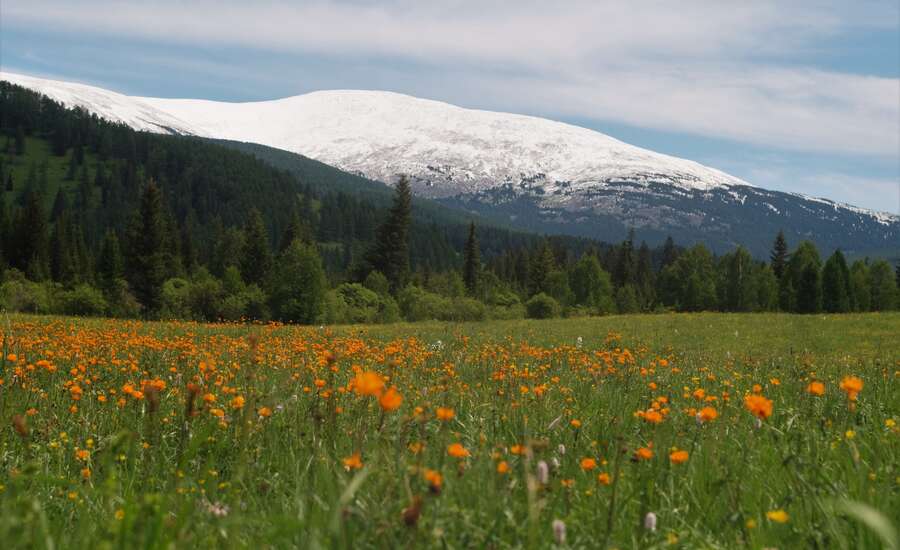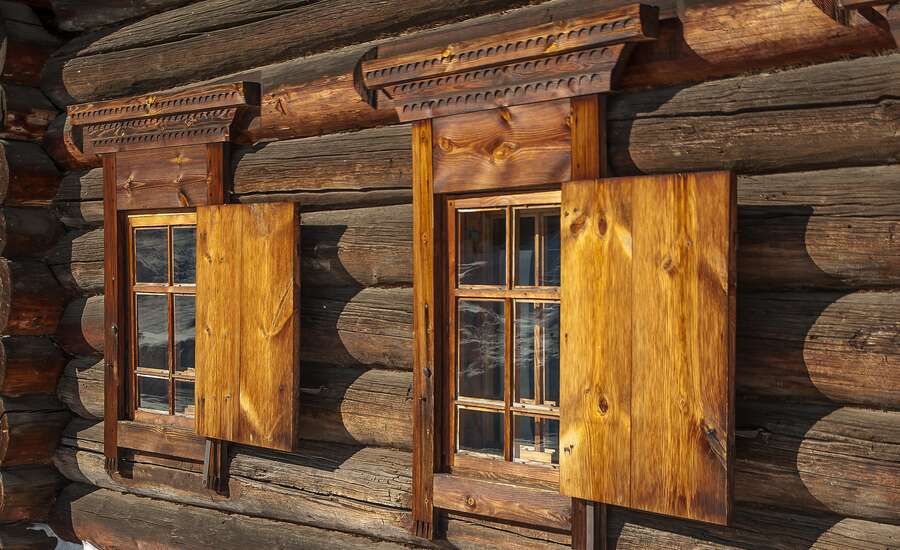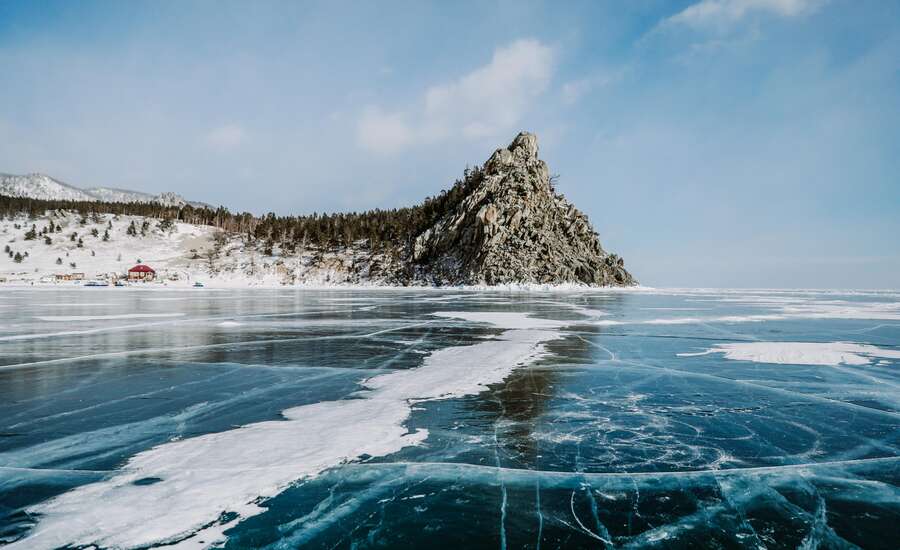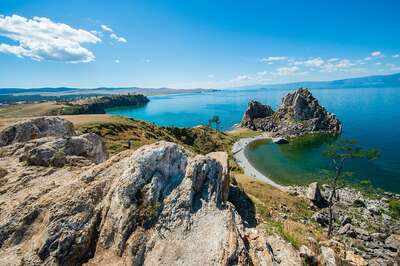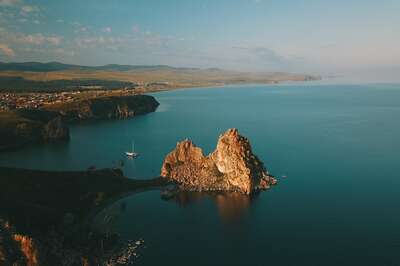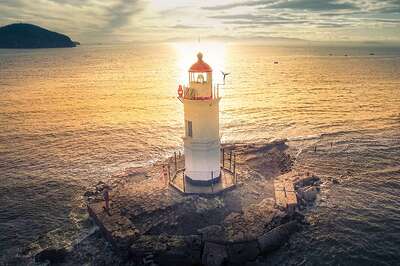Siberian Federal District
Photo by Sergey Pesterev on Unsplash
What is There to See in Siberia?
- Novosibirsk is the academic center of Siberia. It offers lots of attractions like museums, art galleries and a zoo.
- It is said that people have been settling in the region of modern-day Krasnoyarsk for at least 35.000 years. Thanks to this you can find a large collection of ancient fossilized weapons, artwork, statues and other cultural objects from different peoples.
- Not far away from Krasnoyarsk lies the Stolby Reserve, a natural collection of gigantic stone pillars with interesting names like “Feathers” and “Big Golden Eagle”.
- The Omsk region is known not only for its beautiful nature featuring magnificent coniferous forests, but also for its architectural splendor.
- By far the most diverse part of Siberia is the Altai Republic. Blue mountains, thick forests, steppes – this region has everything an avid traveler could wish for.
- Located close to wonderful Lake Baikal, Irkutsk boasts cultural attractions as well as stunning architecture and a fascinating history.
Novosibirsk
Photo by Aleksandr9777 from Pixabay
Novosibirsk is one of the most popular stops on any Trans-Siberian tour. The city was founded in the southeast region of the West Siberian plain in 1893 as Gusevka - its unofficial name - because of the construction of the railway bridge through Ob, which connects the Trans-Siberian railway. The name changed several times until the issue was finally settled in 1925 (with Novosibirsk). The city is a meeting point for many railroad lines and motorways, and has a big river port and airport. There are direct flights from Dubai, Beijing, Seoul, Istanbul and Tel-Aviv. A flight through Hannover and Frankfurt (flying time 6 hours) connects Novosibirsk with Europe. Novosibirsk has an excellent railroad connection too, being located on the Trans-Siberian railway. The fast train goes the distance from Moscow to Novosibirsk in 48 hours. Moreover, airlines, railroads and motor roads inside the country connect Novosibirsk with all other Russian regions. The airport "Tolmachevo" is nothing much to look at. To tell you the truth it has been compared to a "saray" (flea pit) and the field doesn't contain any modern lines of any kind - just some trees. But the airport is fully functional and completely safe. (Keep in mind it looked like this 3 years ago, so it may have changed drastically since then - updates welcome). The underground metro stations in Novosibirsk are also a bit funny. It consists of two lines that are not very long. Several stations, which are visible on the map, in reality do not work. They've long remained unfinished and unopened due to a lack of funds. But you can use a few stations and it is extremely easy to get on and off any station and get to the center - Krasny Prospect. In every metro car there are TV sets on the walls, so during your 10 minutes of underground traveling, you can get your fill of the news or random Russian TV shows. The metro does manage to connect the two banks of the Ob and thankfully so, since the city is situated on both sides of the river and each district has its own center. Novosibirsk doesn't have one central downtown area, but seeral districts, which each have their own centers.
Have you ever heard about "Academ-gorodok"? No?! Ask anyone about it, when you are in the region. The people of Novosibirsk are very proud of the fact that the city is a significant scientific center in Russia, despite being only 100 years old. Many Russian people don't know much about the city, but almost everyone has heard of "Academ-gorodok". It's like Kedrs (the Siberian Pine) and its nuts, which are the unofficial symbol of Novosibirsk (everyone knows that Kedrs from Novosibirsk are delicious nuts). If you get the chance, visit the world-famous town of academics, where a great number of discoveries in physics, chemistry and space technology have been made.
The climate in Novosibirsk, in keeping with its scientific leanings, is very logical: cold in winters (they last from the beginning of November till the end of March) and the summers are short but hot. The average temperature in January is -19°C, in July +19°C and fluctuates between the two in May and September. If you spend enough time in the city, you will have an opportunity to see the Ob Sea from the outlook located at the Novosibirsk hydro-electric power plant. You also won't want to miss is the opera and ballet theater on Krasny Prospect, which is outstanding in terms of architecture and price (very low). Moreover, the city has many concert halls and museums. An annual festival of opera, ballet, and art is held in March, and the festival of arts, "The Novosibirsk Autumn," is held in October. The state conservatory and its specialized musical school are widely known since a lot of talented musicians have emerged from here.
he Novosibirsk picture gallery has a magnificent collection of Russian paintings from the 18th-19th centuries (Tropinin, Repin, Sourikov), a unique exhibition of Russian icons, including the so-called "people's icons", and 60 paintings by Nikolai Rerikh. There are a variety of other museums in the city that are quite interesting. The Regional Museum has a rich paleontological and archaeological collection, including folk and shaman dresses. Those who are interested in natural science will enjoy visiting the Siberian Zoological Museum (founded in 1945) which boasts a vast collection of over 3 million items.
If you are visiting Novosibirsk during the summer months, don't forget about the zoo! The park is full of cafes, amusements and kiosks. There are plenty of animals of all kinds to see and you can even jump up on the hump of a camel or the back of a horse for a ride around the park. Try your luck in a lottery and get a memorable prize. Novosibirsk Zoo is a great place for kids and adults, one of the best zoos in Russia.
The railway bridge over the river Ob, built at the end of the last century, is a historical monument of the city. It is linked to the foundation of Novosibirsk. The bridge was opened for traffic in March of 1897. This bridge combined with the seemingly endless series of bridges along the Trans-Siberian railroad became the biggest construction project in Russia at the end of the 19th century.
In 1915, in memory of the house of the Romanovs, the chapel of Saint Nikolai was built in the central Fair Square. The chapel was a symbolic center of the Russian Empire.
The entire Sibir district is quite economically diverse. Mechanical engineering including power and electrotechnics, machine-tool construction, the metal plant, chemical-pharmaceutical, light, and the food-processing industry are all here. Grain crops, potatoes, vegetables and berry cultures are all grown in this area as well.
Novosibirsk and the rest of the region will amaze you with its splendor and primeval beauty. It is truly a paradise for fishermen and hunters.
Krasnoyarsk
Photo by Andrey Max from Pixabay
The Russian Tsars began to develop the "wild East" of Russia, which lies beyond the Ural Mountain ridge, between the 16th and 17th centuries. At approximately the same time expeditions to India, Africa and South-Eastern Asia were launched by the Portuguese, Dutch, French and English respectively. A century earlier the Spanish conquistadors landed in Central and South America. According to historians, there was no Cortez, who drowned all Latin American provinces in blood, in Siberia; however, the development of new lands in Siberia did not expand without struggle. The great Russian painter, Cossack-pioneer descendant, and Siberian native Vasiliy Ivanovich Surikov showed this vividly in his picture "Ermak Subjugation of Siberia". The city of Krasnoyarsk, where the painter was born, appeared in 1628 as a military fort and a frontier advanced post that defended Russian settlements. This was necessary at the time, because on the banks of the Yenisei nomads tried to move in and take over.
Archaeologists insist that people first appeared on the banks of the Yenisei 35 thousand years ago. During all these centuries, the waves of several great migrations rolled through these places along the banks of the river, which is the watershed between Eastern and Western Siberia. This ancient land still holds plenty of mysteries and secrets about disappeared ancient civilizations, and the region is famous for its unique bronze castings. In the Krasnoyarsk Museum of Regional Studies there is a great collection of fossilized weapons, decorations, and cult objects of Scythian-Siberian animals (a civilization of the Yenisei Scythians of the 8th-9th centuries B.C.). The museum also has Hun bronzes and ancient Urgian casts (6-9th centuries). Many native Siberians still believe that any person who finds a bronze object will find life happiness.
Krasnoyarsk - the new stockade town - was founded by the head of the Cossacks, Andrey Dubenskiy. In his message to Tsar Mikhail Feodorovich he wrote: "The place is pleasing, high and beautiful. Your Sire's stockaded town can be built on this place." Probably from this very quote, the name of the city originated: Krasny Yar (bank) - Krasnoyarsk. (In Old Russian the word "krasny" had two meanings: red and also beautiful.)
The city of Krasnoyarsk played the role of a frontier advanced post for about 100 years. The stockaded town was not completely built when it was attacked for the first time by bellicose nomads. The Cossacks almost annually repelled the attacks of natives; they were in the state of siege sometimes for months, but during the years of its existence Krasnoyarsk was never conquered by the enemy.
Krasnoyarsk received official town status in 1690, when Siberia was finally joined to rest of Russia. By that time a total of 2,500 people lived here, the majority of them male. But twenty years later the situation changed. According to the population census of 1713, the number of males and females living in Krasnoyarsk was virtually the same - the military settlement began to become a town.
A new stage in the development of Krasnoyarsk began in 1822, when by the Tsar's order the Yeniseiskaya province was formed, with its center in Krasnoyarsk. Life of the provincial Siberian town became more brisk with the appearance of new state institutions together with high-ranking officials. Merchants, craftsmen and owners of gold-mines attempted to reach Krasnoyarsk and the town received its first stone buildings; the printing house was opened and the first Krasnoyarsk newspaper "Yeniseiskaya Province Gazette" was published. Development was also sped up by the Trans-Siberian Railway construction, which passed through Krasnoyarsk. On December 6, 1895, the first train stopped here; thus the remote, small town of Krasnoyarsk gradually turned into a big administrative center in Siberia.
It goes without saying that the main attraction in Krasnoyarsk is the Yenisei. The river is formed by the confluence of the Big and the Small Yenisei in the Tuva Republic, and is 3,487 kilometers long. The river basin area is 2,580,000 square meters. This is the fullest river in Russia; the average water outlay reaches 19,800 cubic meters per second. On its way to the ocean the Siberian River takes in more than 500 large tributaries. Almost 625 cubic kilometers of fresh water flow annually into the Arctic Ocean. Not surprisingly, the Sayano-Shushenskaya and the Krasnoyarskaya Hydro-Electric Power Stations - the most powerful hydroelectric power stations in Eurasia - were built on the Yenisei.
Krasnoyarsk bridges deserve special attention. The subject of long standing pride to Krasnoyarsk citizens is the railway bridge over the Yenisei, constructed in 1899 by the mechanical engineer E.K. Knorre and designed by a professor from the Moscow Engineering School, L.D. Proskuryakov. At the world exhibition in Paris in 1900 this bridge was awarded with a gold medal, which is the highest achievement of technical thought (the same reward was given to the world famous Eiffel Tower). Unique bridges over the Yenisei were also built by our contemporaries. In 1961 a communal bridge, the length of which is 2,100 meters long, was put into operation. But even more grandiose is the Oktyabrsky Road Transport Bridge over the Yenisei, built in 1986: it is 41 meters wide and more than 5 kilometers long.
Stolby Reserve
Photo by Andrey Max from Pixabay
The area of whimsical rocks, which is known as the state nature reserve "Stolby", is located about 3 kilometers from the city of Krasnoyarsk. This unique creation of nature occupies a territory of 47,000 hectares on the right bank of the Yenisei, in the spurs of the Eastern Sayan. For millions of years rains and winds sculpted the unusual gigantic figures, most of which have been named: "Feathers", "Lion Gates", "Devil's Finger", "Totem", "Grandfather", "Big Golden Eagle", and so on.
From quite some time now the reserve has been a favorite resting spot for Krasnoyarsk citizens. Nowadays these "gigantic stone gardens" (the height of some stolby reaches 100 meters) have an aerial ropeway, leading to an observation ground with a splendid view. Even though the mountains in Siberia are not that high, Krasnoyarsk is still a recognized center for rock- and mountain-climbing preparation. The most famous Krasnoyarsk mountain climbers were the Abalakov brothers, who began their journey to the peaks beyond the clouds from "Stolby". Vitaliy Abalakov was the first, who conquered the peak of Lenin (7,134 meters) on the Pamirs, and Eugene, the peak of Communism (7,495 meters) - the highest peak of the former USSR.
To see the beauty of Stolby with your own eyes, book a tour with us.
Exile
Photo by Alexei Kuznetsov (1845-1928)
Siberia has always been synonymous with the words "exile", "prison", and "penal servitude" in the consciousness of Russians. The Moskovskiy Highway, which was a famous route for escaped convicts, stretched for thousands of kilometers from the capital of Russia to the Far East, and passed through Krasnoyarsk in the 18th century. But long before the 18th century, the town was already a home for Russian exiles. Already in the 17th century the military garrison of the Krasnoyarsk was actively replenished by "service people" from European Russia, who had made a slip, and for whom penal servitude or even capital punishment was often replaced with exile to remote stockaded town-forts. In this respect it's interesting to know the data from the 1897 census: convicts made up 23% of the population in Krasnoyarsk. One can only imagine the number of criminals that Krasnoyarsk has seen during its 370- year history!
The first "prisoners of conscience" in Siberia were old believers, driven out from Central Russia after the schism of the Russian Orthodox Church in the middle of the 17th century. Later the Decembrists found themselves "in the depth of Siberian ore-mines": ten of them were sent to Krasnoyarsk. They were followed by active workers of the first socialist circles, the participants of Polish uprisings of 1830-1831 and, of course, Marxists. In the spring of 1897 Vladimir Ulianov-Lenin was exiled to Krasnoyarsk. Many comrades of his were also here against their free will, including Felix Dzerzhinskiy and Joseph Dzhugashvili-Stalin. The two latter ones continued "the convict" history in Siberia by founding a GULAG center. Since that very time in the Krasnoyarsk region, the number of prisoners per capita of "free" citizens has been several times more than in Russia itself.
The People of Siberia
Photo by Nicolai Traasdahl Tarp on Unsplash
Siberia was built by Cossacks and also by priests, who arrived in the wild land at about the same time. Cossacks built the stockaded towns and suppressed bellicose nomads from entering, while the priests built temples and turned pagans into people of the Orthodox faith. However, they did not restrict themselves to missionary work. Many modern Yenisei towns and villages were founded by monks, who taught the natives not only how to read the bible but also how to make salt, smoke fish and build houses.
After the Cossack pioneers lived in Siberia for some time in the 17th century, old believers -irreconcilable antagonists of the patriarch Nikon, the reformer of the Russian Orthodox Church - came to Siberia. Some people, like the legendary archpriest Avvakum, who was one of the schism leaders, were brought to Siberia by force, while others escaped the oppression of the "new faith" supporters of their own free will and traveled to Siberia. These old believers settled down very rapidly in Siberia.
Sibiryak - the Unknown Nationality
Photo by jacqueline macou from Pixabay
You can leaf through hundreds of encyclopedias and volumes of ethnographical reference books and in none of them will you find the nationality "Sibiryak" explained. It does not exist, but there does "Sibiryaks" as a culture does indeed exist. These are people of different languages, races and religions, who are united not only by a common home (Siberia), but by something more significant which people call the Siberian character. The Siberian people are the end product of a centuries-old mixture of blood, traditions and customs, which lived and continue to live to the east of the Ural Mountains. Tireless steppe nomads and cool taiga hunters, Cossacks and peasant-migrants, convicts and political deportees are all the forefathers of modern Sibiryaks. The severe Siberian nature and an austere way of life taught people there to be firm and courageous.
Krasnoyark's Famous Sons
Self-portrait by Vasily Surikov
The Russian province has always been rich in talent and there is probably no place in Russia which does not have its own famous townsmen. Krasnoyarsk is no exception. Fame was brought to this provincial Siberian town at the end of the last century by Vasily Ivanovich Surikov, who was born here in 1848 to a Cossack family. The great Russian painter became a classic already during his life-time. His pictures "The Morning of Strelets Execution", "Menshikov in Beryozov", "Ermak Subjugation of Siberia" and others became the pride of many international museums. After graduating from the Academy of Arts, the artist settled in Moscow, but did not forget Krasnoyarsk. Dozens of times he visited his home town, easel in hand, walked along its streets and drew his fellow countrymen as well as sketches of his future pictorial canvases. One of his most famous pictures, "Capturing of a Snow Fortress", was drawn by Surikov in his parent's house, and has been solicitously preserved by the city of Krasnoyarsk up to the present day. In 1948, on the 100-year anniversary of the painter's birth, the two-storied residence became the memorial museum-estate of the painter. In further honor of Surikov, the Krasnoyarsk Children's Art School, the Art College and the Art Museum were all named after him. The latter has a unique collection of the artist's masterpieces, which numbers 84 works.
A geographical province does not mean a cultural one. It is not widely known that the first district library to be opened in Russia was opened in Krasnoyarsk. In 1784, one and a half centuries later, sprouted the genius of the great Russian writer Victor Petrovich Astafiev. Born in the Krasnoyarsk suburban village Ovsyanka, he spent his childhood here, finished crafts-school and began his working way as a train-maker on the station Bazaikha. There is no point in enumerating titles of the books written by Viktor Petrovich. They are read by millions of Russians and translated into dozens of languages in many countries of the world. But nowadays Astafiev is not only the great writer but he has also become, for many people, a type of moral support in life. He helps his fellow countrymen survive and to have faith in a better future. He is one of those few Russian people whose opinion and moral position actively influences the social life of society. In Krasnoyarsk in the 1960s another great Russian writer, Valentin Rasputin, began his creative career as a correspondent of the region's youth newspaper. His first books were also published here.
Omsk region
Photo by Федор Самсонов from Pixabay
The Omsk region is located in the South of Western Siberia, almost in the center of Russia. The region center has a population of 1,148,000 people. The climate is quite severe, but at the same time it is favorable for recreation activities: the number of daylight hours exceeds here exceed those in the Crimea. The air is dry, thus one can endure the heat and cold relatively well. The average temperature in January is -19 degrees Celsius, in July +17 to +19 degrees Celsius. In July the water in the Irtysh River is about 23-29 degrees Celsius.
Omsk is situated on the banks of 2 different rivers, Om and Irtysh. Omsk is one of the most beautiful cities in Western Siberia. It is known as "city-garden". For tourists, this region contains many places of interest. One of the oldest art museums in Russia is located here, which possesses more than 16,000 invaluable masterpieces. It was founded in 1924. Interestingly, the fate of the great Russian writer F.M. Dostoyevsky was connected with Omsk. In 1851-1855 he was condemned to penal servitude in Omsk prison. Authentic artifacts from those times are kept in the Literary Museum of F.M. Dostoyevsky.
Omsk is considered to be a theatrical capital of Siberia. It has 6 theaters, the oldest of which is the Academic Theater of Drama, founded in 1874. Performances of this theater have been shown in Germany, Denmark, Japan, Sweden and many other countries of the world.
The city has a unique appearance due to the wonderful architectural masterpieces of the 18-20th centuries. They include the working Nikolsky Cossack Cathedral (1830), the former trade stock exchange and the Railroad Management, the fire tower, Tarskiye and Tobolskiye gates, Pushkin regional library and others. While visiting Achairsky Monastery, it is worth seeing the Serafimo-Alexeevskaya Chapel.
In the city of Tara, which is 400 years old, tourists will be surely impressed by masterpieces of wooden architecture, the stone building of the Spaskaya Church, the art gallery and the Cherkoushanskaya pine and birch grove.
Bolsherechye is an ancient Siberian village founded in 1627. It is very interesting as a historic and ethnographic center, where you can see a unique country-side zoo (containing more than 150 species of animals and birds), an arboretum and a center of "Siberian Antiquity".
Forests cover about 24% of the region's territory. It is an exotic dark-coniferous taiga providing great opportunities for hunting, fishing, gathering mushrooms, berries, cedar cones and herbs. There are also numerous birch and aspen groves.
The Omsk region has enormous resources of underground mineral water, which contains healing properties. The lakes Ebeyty and Ouidzhay contain curative mud. Mineral water and curative mud are widely used in local health resorts.
Altai Republic
Photo by Aleksandra Sapozhnikova on Unsplash
The Altai Republic is situated within the borders of the mountain country Altai. It is contiguous with China, Mongolia, and Kazakhstan. The climate is temperate continental, with a short, hot summer and long, severe winters. The nearest international airports are in Barnaul and Novosibirsk. Airlines, railroads and motor roads inside the country connect Gorno-Altaisk with all other Russian regions.
The mountain Altai has a unique magnetic power. It is preferred by even the most seasoned of travelers around the Russian Republic and is said to be vastly superior to the Ural Mountains and the Caucasus. Blue and spacious, full of exotic light, the Blue Altai's unique sights are very worthwhile adventures. Here you will find the highest peak of Siberia, Mount Beloukha (Kadyn-Bazhi). The animal and vegetable Kingdoms of the Altai are extremely diverse. For a long time this region has been considered one of the best hunting places of Western Siberia. One fourth of the territory of the whole Republic is included into the natural preserve fund of the Altai Republic. There are also more than 2,000 mineral springs famous for their healing properties. Furthermore, there are thousands of archeological and ethnographical sites. It is in this region and the seven caves of Mount Altai that the most ancient steps of the Paleolithic Man are found, as well as numerous cave-paintings. The relic Savoushinskoye Lake, unique pine forests, the Denisov Cave, which bears the steps of an ancient man (some scientists/ historians believe that the first man appeared in Altai) are all places well worth visiting.
There are also plenty of museums In the territory of the Altai Republic. The G. I. Chros-Gourkin museum estate in Anos, the N. K. Rerikh regional museum, the museum of Old Believers in Verkhy Uoymon, and the museum devoted to the native people of those places - telenguites - in Oulagan are just a few. A museum, memorial center and a madrasah mosque are in operation in Zhana-Aul, while in Mendour-Sakon you can also visit the regional museum of Altai culture. The museum of the Kazakh culture is located in front of the bridge leading to Lake Aya and is of great interest as well.
In fact Altai is so diverse that it can easily satisfy any traveler. You can travel here by foot, on skis, riding a horse or camel, by helicopter or paragliding. Rafting is suitable for rough rivers, mountain skiing - for steep slopes, cars and bikes - for mountain passes, special climbing equipment - for high mountains. The Swiss say that the Altai mountains resemble the Alps in many ways. The Teletskoye Lake is one of the most picturesque mountain lakes in Siberia. The other name of the lake is Altyn-Kol (Golden lake), which is connected with the old legend about a gold nugget once thrown into its water. The lake is especially beautiful in fair weather, when the trees, mountains, and sky are reflected on its surface. More than 70 rivers flow into the lake and only one flows out - the beautiful Biya. The water of the lake is very pure. The lakeside is almost vertical, in some places nearly 2,000 meters high. Here you can see waterfalls dashing down into the lake and deep caves ringing the bank. The territory and population of the Altai possess a rich heritage, preserved until the current day, for example the interregional folk holiday El-Oyin. This has been held once every two years in different districts of the Republic since 1988. You can take part in different competitions, including Kouresh wrestling, archery, weight and stone lifting, and horse races. The guests have a chance to see colorful historic performances about the history of the Altai people and buy masterpieces of local craftsmen (and even a horse or a ram).
Irkutsk Region
Photo by jacqueline macou from Pixabay
The Irkutsk Region is situated in Eastern Siberia and has a continental climate. The average temperature in January is -15°C in the south and -33°C in the north of the region, and the average temperature in July ranges from +17°C to +19°C. A fast train can make it from Moscow to Irkutsk in 78 hours, while flying time is about 6 hours. Irkutsk has an international airport that services direct and transit flights to Japan, China, Korea, and Mongolia. Daily flights from Irkutsk to Moscow and back are scheduled to connect to European flights to London, Berlin, Copenhagen, Frankfurt, and Helsinki. The Trans-Siberian railroad goes right through the city. Airlines, railroads and motor roads inside the country connect Irkutsk with all other Russian regions.
The culture of the Angara region has deep roots. The Siberian region is the gates to the East of Russia and used to be the starting point of expeditions aiming at exploration of America, Japan, China, and Mongolia. Irkutsk was the capital of Eastern Siberia at that time. Many years have passed, the city has changed, but while walking along its streets one starts to realize that its true wealth is antiquity. All the centers of the city's cultural life are located in ancient buildings, many of which are architectural monuments of different artistic and historic styles.
Irkutsk is also a cultural center. In 1939 the regional Philharmonic Society was established, in addition to which there are chamber and symphony orchestras. In 1978 the Organ Hall of the Irkutsk Philharmonic Society was opened in the building of the Roman-Catholic Church - the only architectural monument of the gothic style in Siberia. Theater traditions were established in the 18th century, because between 1803 and 1809 three public theaters were opened. They introduced to the citizens the genre of "fairy opera". In 1875 operetta came to the Irkutsk stage and in 1897 the construction of a magnificent theater was finished. To this day the theater is still considered one of the pearls of the city. The theater gave birth to the world renowned modern playwright Alexander Vampilov, who wrote in Anton Chekhov's tradition, but died early.
The architectural-ethnographic museum "Taltsy" is the cultural property of all of Russia's nations. This is a museum of culture and of the people of the Angara and Baikal regions of the 18th - 20th centuries: Russians, Aborigines, Buryats and Evenks. The regional museum was opened in 1872 with the help of Irkutsk's governor F. I. KIichki. The main building of the museum was built in a Moresque style and is an architectural monument; it displays up to 350,000 items. The regional arts museum has more than 16,000 works of Russian, Western-European, Siberian and Eastern arts. There are also unique pieces of international arts, including the works of I. Repin, I. Shishkin, V. Polenov and I. Savrasov. The Decembrists museum (the Volkonskiys and the Troubetskoys houses) tells us about the Decembrists and their actions in Eastern Siberia, penal servitude and their settlements.
But Irkutsk is not all about history: annual international tournaments and festivals are held here: the calisthenics tournament in memory of the seven time world champion O. Kostina, the sport-dance tournament "Blue Baikal", ethnocultural festival "Yerdynskiye Games" and others. Irkutsk, along with Moscow and St Petersburg, is one of the best cities to visit in Russia.
Lake Baikal
Photo by Daria Gordova on Unsplash
One of the main treasures of this region is the famous Lake Baikal. Clear water, beautiful harbors, welcoming beaches, picturesque landscapes and unimaginable areas of forests and mountains make up Baikal. If you go for a wonderful trip along the lake in a motor ship, you will stop for excursions to the waterfalls, caves and to see historical and cultural monuments. You will have a unique opportunity to fish umber, omul, and white-fish, discover the way of life from locals and take part in the festivals.
Lake Baikal is a sacred place, where pilgrims from the farthest corners of our land come to rest and rejoice in nature. The indigenous Siberians feel something mystical about Baikal. They never refer to it as simply a lake, but the Sea or the Old Man or sometimes just "He!" Many years ago different nations inhabited the shores of Baikal and each of them had their own name for the lake. The Chinese people called it in their ancient chronicles "Ten-gis", "Tengis-Dalay", and the Buryat-Mongolians called it "Baigaal-Dalay" - "a big reservoir". The origin of the name "Baikal" is not yet known. The most common version is that "Baikal" comes from Turkish languages, where "bay" means rich, "kul" means lake. Baikal is one of the oldest lakes on Earth; scientists say that it is 25,000,000 years old. Lakes usually live 10-15 thousand years, than they get filled with sediments and disappear from the surface of the planet. Baikal, however, has no sign of decay. On the contrary, geophysicists believe that Baikal is an incipient ocean. Every year it grows by two centimeters. Among all the lakes of the Earth Baikal ranks first in terms of depth and eighth in terms of area (the area of Baikal is approximately as big as that of Belgium). Baikal is a unique lake. It is the largest water reservoir on the planet (23,000 cubic km). Baikal's basin contains 20% of the world's reserves of drinking water. There are no longer open reservoirs with suitable drinking water for bottling on the Earth. There is no other lake on the planet that could be compared to Baikal in terms of its biological diversity. Out of 2635 known species of animals and plants inhabiting Baikal, almost 2/3 are found only here. In December, 1996, Lake Baikal was included in UNESCO's World Heritage List. It is without any doubt one of the most beautiful places in Russia.
The railroad that goes around Baikal is a unique monument of Russia's technical thought and constructive architecture at the end of 19th - beginning of the 20th century. The railroad makes its way through the rocks of the Maritime mountain bridge over Baikal, called "The Golden Clasp." Connecting the East and West of the "Trans-Siberian", this railroad is one of the most beautiful and technically sophisticated examples of its kind, and contains 39 tunnels, 47 galleries, 6 viaducts and 29 medium-sized metal bridges. The longest tunnel is 807 meters long, the largest single-span bridge is 123 meters long. You will be impressed by the well-preserved portals and arches of the different tunnels, viaducts, thick retaining walls and wooden constructions of the twentieth-century Modernist style. Don't miss it.
